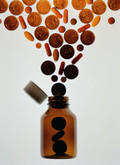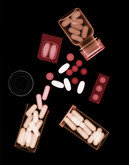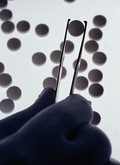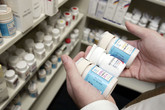Generics/Research
Patent and regulatory exclusivities driving generic and follow-on market availability
Daniel Nam reviews the differences between intellectual property exclusivity (patents) and regulatory exclusivities (market exclusivity) in the US [1]. A patent is a grant of property right to an inventor for 20 years from the date of application. Market exclusivity is awarded to manufacturers of first-to-market brand products and excludes other manufacturers from marketing the drug product for a certain period of time, depending on the type of product. Nam explains that these tools are used by the US Food and Drug Administration (FDA) to achieve a balance between innovation and equitable access to medications.
Addressing patient misconceptions about generics
In the face of increasing drug costs, substitution by generics is often used as a strategy by healthcare systems to rein in expenditure. However, patient misconceptions about generics can hinder such substitutions. Researchers Sanchez and Zurek discuss how pharmacists can improve this situation by educating patients on the use and safety of generics [1].
Policies to address price rises in old generics
Old, off-patent drugs are becoming increasingly expensive. But how can policymakers address the problem? Naren P Tallapragada from the Harvard Medical School discusses the underlying causes of the high-cost off-patent drug problem and proposes some policy solutions that could address the problem [1].
Combating shortages and price increases in the US generics market
As a result of recent price increases and shortages, the US generics market has come under increasing scrutiny [1]. In a recent report by Wiske et al. authors from Brown, Duke and Harvard Universities discussed ways to increase the competitiveness of the US generics market that might address these problems [2].
Therapeutic substitution could save Americans US$73 billion
Therapeutic substitution could save the America healthcare system US$73 billion and patients US$24.6 billion in out-of-pocket expenses, according to US researchers [1].
Transparency in the Australian pharmaceutical industry
In Australia, the promotion of medicines to healthcare professionals is controlled by self-regulatory schemes operated by the pharmaceutical industry.
Factors affecting generics entry
Edward Kong, Research Assistant at the Yale University, Department of Economics, carried out a study into the factors that influence a generics maker’s decision to enter a specific market [1].
Cost-effectiveness analysis and incentivizing innovation
In the paper by Santiago Moreno and Joshua Ray, the controversial role that conventional cost-effectiveness analysis (CEA) plays in incentivizing innovation is revealed [1]. Detractors criticize its use for pricing purposes because it disregards the value of innovation brought by new drugs, while supporters argue that it is already accounted for. The objective of the paper is to identify the limitations of the conventional CEA approach and to propose an alternative that offers a more realistic estimate of the true value of innovation.
Perceptions of the value of generics in Brazil
Generics were first approved in Brazil in 1999. Substitution of generics and reference drugs can occur at the time of purchase and upon patients’ request, and, in the public healthcare system, physicians must prescribe drugs by their Brazilian Common Denomination (Denominação Comum Brasileira – DCB). However, despite legislation that supports their prescription, generics still have a small market share, representing only 27.3% of all drug units sold in Brazil in January 2014. A potential reason for the low penetration of generics into the Brazilian market is a negative perception of the value of generics.
Substitution of generic antiepileptic drugs
Despite the availability of generic antiepileptic drugs (AEDs), patients and neurologists still hesitate to make a switch due to several reasons.













